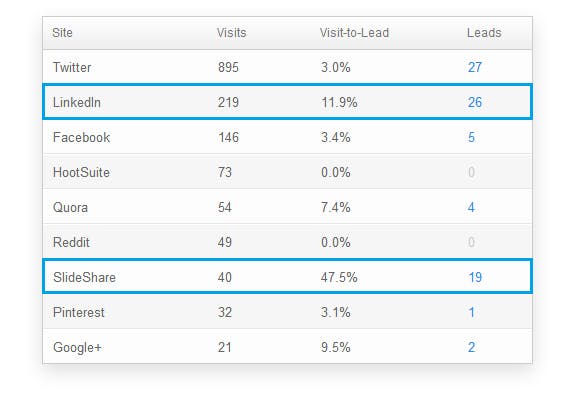Customer Profiles: A Smarter Way to Reach Your Customers


Although customer profiling may sound like a mug shot lineup of your customers, I swear this post’s intentions are positive!
A useful customer profile (aka a persona) is akin to a comprehensive how-to guide on reaching your ideal customers. It gives you a structured look at their goals in trying your product, the features and content that matters most to them, and the messaging that will help them find you in the first place.
If your business is currently winging it to create an understanding of your ideal customer or if your current profiling attempts are vague and ineffective, then read carefully below!
We are going to look at how you can easily create an informative and flexible customer persona template that you can use to paint a clear picture of who exactly is a fit for your product.
Try the customer support platform your team and customers will love
Teams using Help Scout are set up in minutes, twice as productive, and save up to 80% in annual support costs. Start a free trial to see what it can do for you.
Try for free
How Customer Profiling Can Increase Sales
Trying to sell products and services without understanding your ideal customers is like driving with your eyes closed!
Although utilizing customer feedback is a great place to gather intelligence on your customers, what to do with that information is the next step that often eludes many small-business owners.
This is where a simple customer profile template comes into play. You can create one this week by following three simple steps.
Step #1: Create Broad Descriptions of Your Ideal Buyers
The first step you should take in assembling your customer persona is to create broad descriptions of each ideal customer. We’re not talking about demographic data or any sort of personal information, only a high-level view of what they do and what’s important to them in doing business with a company like yours.
As a firsthand example, here at Help Scout we have three very different customer personas that our software caters to. This is how we describe two of them:
1. Growth Graham – Graham is the founder of a small business and he signs up for Help Scout because he’s curious. He cares most about scale, price and providing outstanding, personalized support for customers.

2. Help Desk Heidi – Heidi is the lead customer support manager for a larger company, and she has been given the task of finding a new company help desk. She wants a product that makes her a better manager, so she is most concerned about agent productivity, reporting and team collaboration.

While these two potential customers both benefit from our product, they have very different motives for signing up. Lumping them together as “people who need a help desk” would be doing them a disservice since it wouldn’t allow us to cater to their individual needs.
The outline of your ideal buyers will include elements about the customer and their attitude towards products in your industry.
Your “About” section should briefly describe where your product fits in with this customer’s search. Ask yourself what about this customer is a telltale sign that your product (or service) will benefit them and that your company values the same things they do.
Here’s a sample from our Growth Graham persona:
Graham gets what it means to love customers. He’s held on to using email (Gmail, usually) for a long time because he loves how personal it is, but his business is growing fast and he needs something that scales better.
Even this basic portrait of Graham lets us know that he’s utilizing a free product and is at a crossroads; he doesn’t want to give up the personal touch of email, but his team is finding themselves crushed by the current workflow.
That’s a lot of key information, and we’ve only just begun!
When assembling information on your customer’s attitude, you need to look at how your customer typically feels towards the other offerings available in your industry.
For instance, Help Desk Heidi is quite knowledgeable about other available help desks and has most likely tried most of them. She needs very little coaching on the benefits of a help desk. Her concerns will center on the time and cost of switching from her company’s current solution to ours.
Heidi will also be interested in how our reporting tools compare with what she uses today; for the larger-size company Heidi works for, data-driven insights can greatly impact the bottom line.
Now that you’ve created basic identities for your ideal buyers, it’s time to build out these profiles by procuring more detailed information on what these buyers are looking to achieve with your product.
Step #2: Identify Unique User Goals & Most Important Features
This is where you begin to enhance your customer persona with detailed insights that you can use to better appeal to each customer.
The most important information to identify in step two is the user goals for each customer type and the most important features that may affect their willingness to purchase from you.
When identifying user goals for a customer persona, make sure you come up with crystal-clear answers to the following questions:
What language would this customer use to identify their current problem?
What is their greatest hesitation in trying out your offering?
What is the best way to engage with this customer?
When looking at a customer’s current problem, it’s important to pay attention to the language they use to describe the problem. Knowing their thought process will allow you to write the kind of copy that feels like mind-reading.
For instance, we know that Growth Graham is concerned with emails slipping through the cracks in his over-crowded Gmail account, so we wrote copy specifically around that choice phrasing on our email page.

The next important user goal to identify is why each of these customer types may be hesitant to try your product.
We know that Help Desk Heidi has concerns that the newest solution she finds will be as bloated as the one her company currently uses. We spend ample time addressing her concerns on our help desk page, which is the ideal place for her to land on our website.

Lastly, how can you best engage these different customer types? Heidi wants in-depth, data-driven customer service resources, whereas Graham cares more about what integrations are available and what features he can expect in the future.
Is this information available on your site?
Step #3: Locate and List Where Customers Will Find You
How are these ideal customers likely to find you?
If your ideal customers are as varied as Growth Graham and Help Desk Heidi, then the answers to this question differ greatly.
There are certain key elements that you must identify during this process:
What websites will this customer frequently visit? What blogs do they read?
What are likely search terms they will use?
What sort of content appeals to them the most?
To answer the first question, take a close look at the other information you’ve gathered on this customer and assemble a list of websites that they frequent regularly.
Professional products are going to be well-received on LinkedIn, entertainment products will find a great home on places like BuzzFeed, and a bootstrapped cologne company can find some interested buyers on AskMen.
As a B2B company, look at the sample metrics below and see if you can guess which two social networks are filled with Help Scout’s ideal customers.

This sort of information is incredibly useful for planning advertising strategies, crafting successful guest blog posts and collaborating with other businesses that may have a similar audience.
Next, you need to brainstorm what search terms are going to be commonly used by each of your customer personas.
For instance:
Growth Graham is concerned about switching over from email, so we have a page all about email for him to find in a search.
Help Desk Heidi needs to find a new solution since she is already using something to handle support. She’s likely searching for other alternatives and would end up on our help desk comparison page.
Lastly, think about what sort of content will appeal to each customer type, and what sort of content could be useful for support.
To simplify this process, we split content on our blog into two distinct categories: “white bread” content and “wheat bread” content.
White bread is high-level data and advice, meant to appeal to the largest audience possible. Wheat bread is written for a more narrow audience, but the content is packed with healthful content that adds a lot of value.
An example of white bread content would be a large list post that was made for social media shares, such as our article “16 Research-Backed Customer Retention Strategies.” This type of content appeals mostly to Growth Graham because he loves interesting bits of information that he can easily consume and share online.
Conversely, someone like Help Desk Heidi would be more interested in wheat bread content, which covers deeper topics within our industry. Something relevant to her interests would be along the lines of “How to Create Successful Customer Loyalty Programs.”
Identifying which types of content works best for each customer allows you to create meaningful content that converts on your company blog instead of firing off random blog posts that you hope will resonate with your potential customers.
The Supportive Weekly: A newsletter for people who want to deliver exceptional customer service.